Introduction to Green Parenting and Indoor Plants
Green parenting has emerged as a significant movement among families, particularly those residing in urban environments. This approach focuses on raising children in a manner that emphasizes sustainability, environmental consciousness, and a commitment to health and well-being. With many urban families facing limited access to green spaces, indoor plants have become an appealing solution to enhance their living conditions. Incorporating the best indoor plants for beginners into the home not only beautifies the space but also fosters a nurturing environment for children.
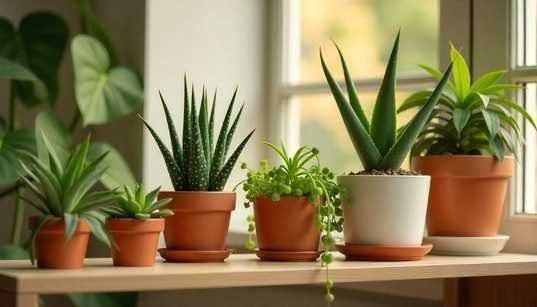
Indoor plants serve numerous benefits that align with the ideals of green parenting. They play a crucial role in improving air quality, making them excellent air-purifying indoor plants that filter pollutants and provide cleaner air. Urban settings often expose families to various environmental stressors, including poor air quality. By choosing low-maintenance houseplants, such as resilient varieties that are hard to kill, families can ensure a green atmosphere without extensive gardening experience. Additionally, many indoor plants for low light conditions are ideal for settings with limited natural illumination, making them accessible and easy to manage for urban dwellers.
Furthermore, indoor gardening can be an educational experience for children, teaching them responsibility and empathy as they care for living things. Families can select pet-friendly indoor plants, ensuring the safety of their animals while fostering a green environment. Fast-growing indoor plants can offer immediate gratification, which is especially rewarding for young ones. These plants provide not only aesthetic appeal but also practical applications in maintaining a harmonious living space. For family members with allergies or sensitivities, focusing on indoor plants for clean air becomes essential.
As the popularity of indoor plants continues to rise among urban families, their incorporation into daily life exemplifies a commitment to green parenting. This movement promotes sustainability, fosters a connection to nature, and enhances the overall well-being of all family members.
Benefits of Indoor Plants for Families
Introducing indoor plants into family homes provides a multitude of benefits that enhance both the physical and mental well-being of the inhabitants. One of the primary advantages of incorporating the best indoor plants for beginners into your living space is the improvement in air quality. Numerous studies have shown that certain air-purifying indoor plants can effectively remove toxins from the air, contributing to a healthier household environment. The presence of plants such as peace lilies and spider plants can significantly reduce pollutants, creating a cleaner atmosphere for families to thrive.
Additionally, the mental health benefits of having low-maintenance houseplants cannot be underestimated. Research indicates that interacting with plants can reduce stress and anxiety levels. As Barbara Fredrickson, a well-known psychologist, highlights, “Exposure to nature is linked to enhanced well-being.” By nurturing indoor plants, families can cultivate a sense of responsibility and connection to nature, promoting mindfulness and relaxation.
Also Read Trending Post
- 20 High Protein Meal Prep Ideas for Weight Loss, Muscle Gain & Busy Lifestyles (2025 Guide)
- Healthy and Sustainable Rooftop Gardening Guide for Beginners: Simple and Effective Methods
- Eco-Friendly Meal Prep Ideas: 10 Essential Tips for Healthy and Sustainable Eating
- Microplastics: Invisible Danger in Our Food, Water, and Environment
- Top 25 Plant-Based Protein Sources Chart: Your Ultimate Visual Guide for a Healthier Diet!
Moreover, indoor plants positively influence children’s development and learning. Studies suggest that children exposed to greenery exhibit improved concentration, creativity, and cognitive skills. Indoor plants for small spaces, like pothos or snake plants, can provide children with hands-on experience in caring for living organisms, fostering a sense of stewardship for nature. These interactions not only encourage empathy towards living beings but also promote valuable life skills.
For families with pets, the selection of pet-friendly indoor plants such as parlor palms or Boston ferns ensures that both children and pets can coexist safely. Furthermore, many indoor plants that don’t need sunlight are suitable for various rooms, allowing families to enjoy the benefits of greenery even in low-light areas of their homes. Overall, incorporating hard-to-kill houseplants into family spaces is not only a way to enhance aesthetics but also falls in line with a holistic approach to family health and happiness.
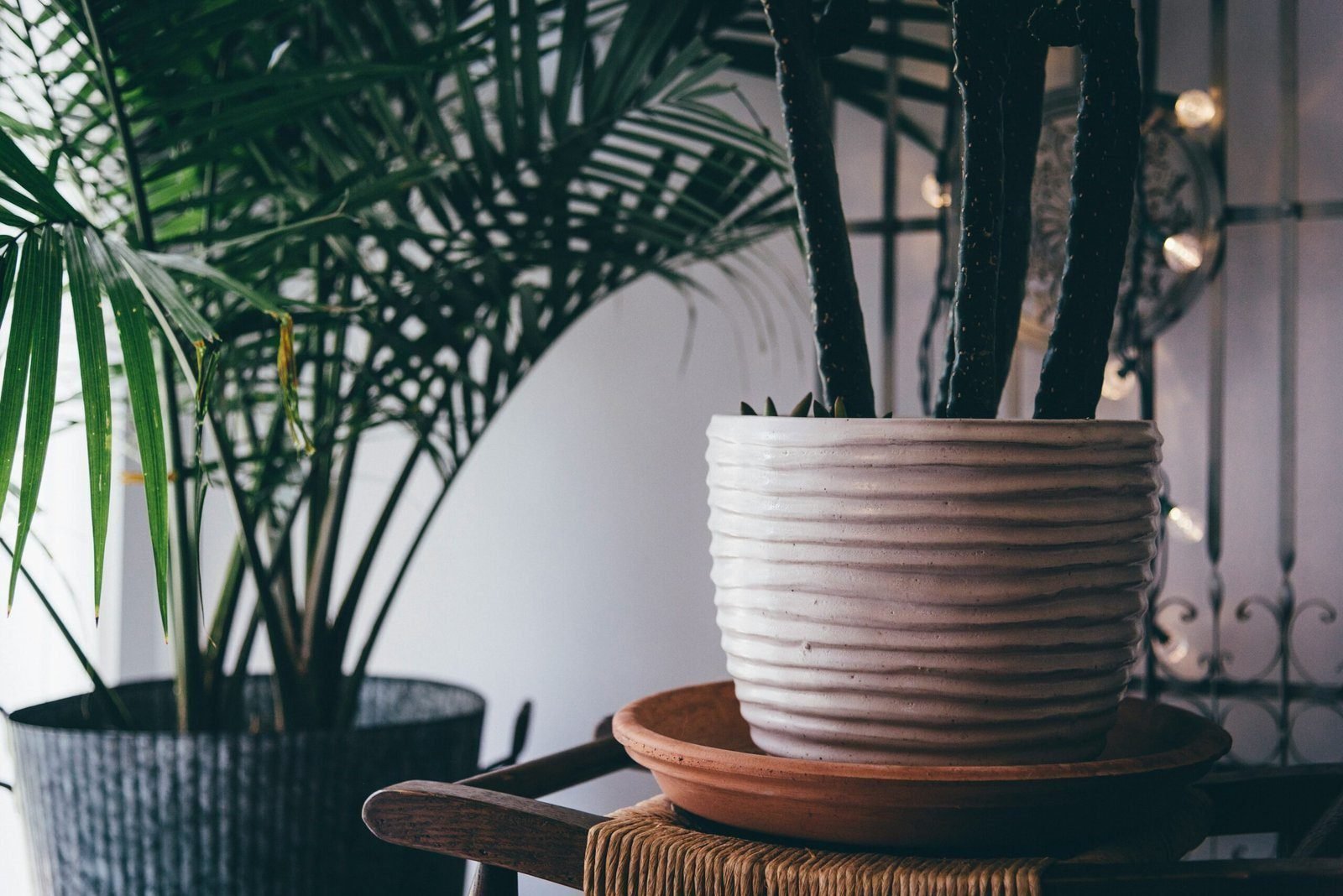
Choosing the Right Indoor Plants for Your Home
When selecting the best indoor plants for beginners, numerous factors should be considered to create a thriving environment that suits both your lifestyle and the needs of your family. Primarily, the light conditions in your home play a crucial role in determining which plants will flourish. Many households experience varying levels of natural light, ranging from bright, sunlit rooms to darker spaces. For areas with minimal sunlight, consider indoor plants for low light such as snake plants or pothos, which can thrive in shade while enhancing the living space.
Space availability also significantly affects your plant choices. Urban homes often have limited square footage, necessitating the selection of indoor plants for small spaces. Opt for compact varieties like spider plants or philodendrons that do not require extensive room. Additionally, hanging plants can maximize vertical space while creating visual interest. By focusing on fast-growing indoor plants, you can enrich your surroundings without overwhelming your limited area.
Maintenance levels are another key aspect to keep in mind. If your family has a busy lifestyle, low-maintenance houseplants such as ZZ plants or peace lilies will be ideal. These hardy varieties are known for being hard-to-kill houseplants, requiring minimal care while providing aesthetic and air-purifying benefits. Furthermore, do not overlook the importance of selecting pet-friendly indoor plants to ensure safety if you have curious animals in your home. Involving children in the process of choosing the right plants can cultivate a sense of responsibility and engagement. Encourage them to participate by selecting a plant they find appealing, reading about its care requirements, and assisting in its upkeep. This shared experience will not only foster a love for nature but also teach valuable lessons about responsibility and nurturing.
Top 10 Indoor Plants for Urban Families – Overview and Criteria
When selecting the best indoor plants for beginners, particularly for urban families, several critical criteria must be considered. The overarching aim is to provide a green sanctuary that enhances the home environment while ensuring safety and ease of maintenance, especially for households with children and pets. This overview will explore these essential factors that make certain plants ideal choices for city dwellers eager to embrace green parenting.
First and foremost, air purification is a significant consideration. Plants such as spider plants, peace lilies, and snake plants are known as air-purifying indoor plants, effectively filtering out harmful toxins while improving air quality. This characteristic not only aids in creating a cleaner indoor atmosphere but also promotes overall well-being, particularly in compact living areas where fresh air circulation may be limited.
Safety is another essential criterion. Families with pets and small children require reassurance that the indoor plants they choose are non-toxic. Hence, pet-friendly indoor plants, such as Boston ferns and parlor palms, stand out as suitable options. These plants provide an aesthetic appeal without compromising the safety of curious toddlers and pets.
The ease of care plays a vital role in the selection process as well. Low-maintenance houseplants, like pothos and ZZ plants, thrive in a variety of conditions, including less frequent watering and adaptability to various lighting situations. For urban families with busy schedules, these hard-to-kill houseplants are ideal, minimizing the risk of neglect.
Additionally, consideration for space is crucial. Many families reside in smaller apartments where space optimization is key. The selection includes indoor plants for small spaces that are compact yet striking, allowing families to enjoy greenery without overwhelming their living area. Some plants even thrive in low light conditions, making them perfect for urban living where natural light may be limited.
In conclusion, the criteria for selecting the top indoor plants for urban families encompass air purification, safety, ease of care, and adaptability to limited spaces. These factors collectively ensure that families can successfully integrate greenery into their homes while promoting a healthy and vibrant environment.
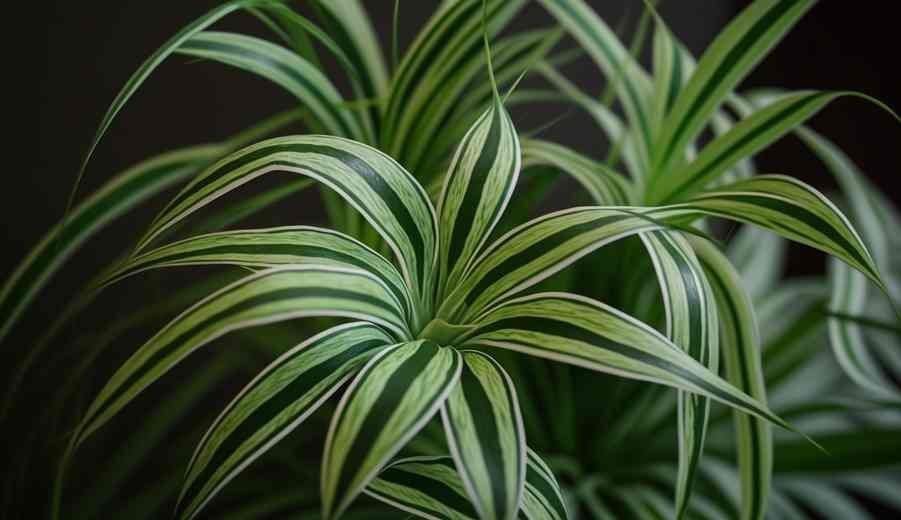
1. Spider Plant: A Hardy, Air-Purifying Champion
The spider plant, scientifically known as Chlorophytum comosum, is widely regarded as one of the best indoor plants for beginners, making it a fantastic option for urban families embracing green parenting. Renowned for its resilience, the spider plant can thrive in a variety of home environments, including indoor spaces with low light. This adaptability ensures it remains a reliable choice for households where light conditions may fluctuate throughout the day.
A significant advantage of the spider plant is its air-purifying capabilities. According to research conducted by NASA, this indoor plant effectively removes harmful pollutants from the air, thereby enhancing indoor air quality. The presence of a spider plant in your home not only contributes to a greener living space but also promotes cleaner air, creating a healthier environment for children and pets.
Caring for a spider plant is straightforward, making it suitable for families with various commitments. It requires moderate watering—allowing the top inch of soil to dry out between watering sessions. Additionally, these low-maintenance houseplants thrive in well-drained potting mix and can tolerate occasional neglect. Families will appreciate that spider plants are also pet-friendly indoor plants, posing no significant risk to pets that may chew on leaves.
Propagation of the spider plant is another engaging activity for families. The plant produces “pups,” or offshoots, that can be rooted in soil or water. This process creates an exciting opportunity for children to observe growth and nurture new plants, instilling a sense of responsibility and appreciation for nature. Furthermore, spider plants are hard-to-kill houseplants, which makes them an ideal choice for new plant parents navigating the world of indoor gardening.

2. Peace Lily: Beauty and Clean Air
The peace lily (Spathiphyllum) is an excellent choice among the best indoor plants for beginners and those who embrace green parenting. With its stunning white flowers and lush green leaves, it not only adds an aesthetic appeal to any indoor space but also impressively purifies the air. Studies have shown that peace lilies effectively remove pollutants such as formaldehyde, benzene, and carbon monoxide, making them favorable indoor plants for clean air.
One of the remarkable qualities of the peace lily is its ability to thrive in low light conditions, which is ideal for urban families with limited natural sunlight. This characteristic makes it one of the best indoor plants for low light, offering a flourishing green option without requiring extensive sunlight exposure. Additionally, peace lilies are categorized as low-maintenance houseplants, which suit busy lifestyles. They only require moderate watering and can be placed in various indoor spaces, including small apartments, as they do not demand much room.
However, while the beauty of the peace lily is captivating, it is important to consider its toxicity. The plant contains calcium oxalate crystals, which can be harmful if ingested by pets or small children. Therefore, care should be taken when placing them in family environments. It is advisable to keep peace lilies out of reach of pets and supervise young children around them. With proper placement and care, families can enjoy the benefits of peace lilies, such as their air-purifying properties and stunning visual appeal, without compromising safety.
In conclusion, the peace lily stands out as a fantastic indoor plant for urban families, particularly for those seeking fast-growing indoor plants that are both visually striking and functional. Its ability to thrive in low light, low-maintenance requirements, and impressive air quality benefits make it a perfect addition to any home.
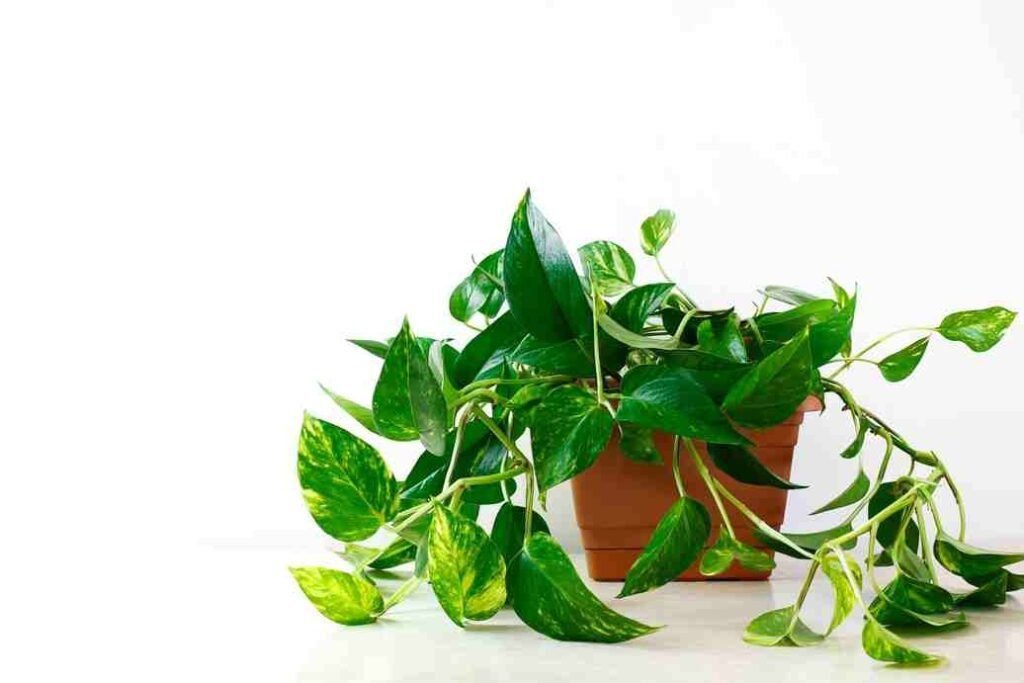
3. Pothos: The Beginner’s Plant
Pothos, scientifically known as Epipremnum aureum, is widely recognized as one of the best indoor plants for beginners. This hardy houseplant is revered for its stunning, heart-shaped leaves that come in various shades of green, often with striking variegated patterns. The visual appeal of pothos makes it an attractive addition to any indoor space, particularly for urban families looking to embrace green parenting.
One of the most notable characteristics of the pothos plant is its resilience. It thrives in a range of conditions, making it an ideal choice for those new to indoor gardening. Pothos can flourish in low-light environments, which is a blessing for families living in apartments or homes with limited natural sunlight. This capability positions it among the best indoor plants for low light. Moreover, it is a low-maintenance houseplant requiring minimal watering—about once every one to two weeks—allowing parents to involve their children in the caring process without too much commitment.
An additional advantage of pothos is its air-purifying abilities. As an air-purifying indoor plant, it effectively filters toxins from the air, thus contributing to a healthier indoor environment for families. Children can learn the importance of clean air and the role plants play in improving air quality. With its rapid growth rate, pothos can also provide children with a sense of accomplishment as they witness its dynamic changes over time.
Furthermore, pothos is considered a hard-to-kill houseplant due to its strengths and adaptability, making it a reliable option for busy families. This plant can also be cultivated in hanging baskets, making it an excellent indoor plant for small spaces while adding an attractive flair to any room. In essence, pothos serves not only as a delightful and engaging plant for beginners but also as an educational tool to foster a love for nature in children.
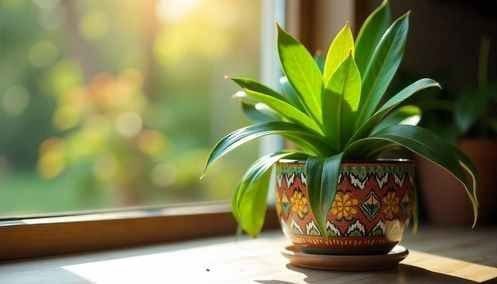
4. Snake Plant: Tough Love
The Snake Plant, also known as Sansevieria or Mother-in-Law’s Tongue, is a remarkable choice for families looking to incorporate greenery into their homes without the burden of extensive upkeep. This indoor plant for small spaces is well-regarded for its ability to thrive on neglect, making it one of the best indoor plants for beginners. Its tough, sword-like leaves can survive in a variety of conditions, which speaks to its status as a hard-to-kill houseplant.
One of the most attractive features of the Snake Plant is its aesthetic appeal. The striking green and yellow variegated leaves bring a modern touch to any room, making it a perfect addition to contemporary homes. Families can easily place it in corners, on shelves, or even on tabletops, as this indoor plant requires minimal space. Furthermore, the Snake Plant is an ideal candidate for indoor plants for low light conditions, as it does not require direct sunlight to thrive, thus catering to various living environments.
In addition to being visually pleasing and requiring low maintenance, the Snake Plant also boasts impressive air-purifying properties. It is known to filter indoor air pollutants, contributing to cleaner air within the home. This makes it an excellent choice for families aiming to create a healthier living environment by incorporating air-purifying indoor plants into their daily life.
For households with pets, the Snake Plant is also a favorable option as it is considered non-toxic, falling into the category of pet-friendly indoor plants. Its durability, low-maintenance needs, and air-quality benefits make the Snake Plant an enduring favorite for urban families who wish to adopt a greener lifestyle.

5. Rubber Plant: A Growing Favorite
The rubber plant, scientifically known as Ficus elastica, has garnered significant attention among urban families for its striking foliage and adaptability to indoor environments. This hardy plant, with its broad, glossy leaves, not only provides an aesthetic appeal but also serves as one of the best indoor plants for beginners due to its low-maintenance care requirements. This makes it an ideal plant for those who are new to gardening or managing indoor plants.
Taking care of a rubber plant involves simple steps that can be easily incorporated into family routines. It thrives in well-draining soil and prefers bright, indirect light; however, it can also endure moderate-light conditions, making it suitable as one of the indoor plants for low light. Watering is required only when the top inch of soil feels dry, thus making it one of the hard-to-kill houseplants that encourage a sense of responsibility and routine among children.
Beyond its practicality, the rubber plant offers air-purifying benefits, contributing to cleaner indoor air. This is particularly valuable in urban settings where air quality can often be compromised. By incorporating air-purifying indoor plants like the rubber plant into the home, families can inadvertently create a healthier living environment for their children, teaching them the importance of caring for plants that provide tangible benefits.
Additionally, the rubber plant provides an excellent opportunity for children to learn about plant growth. Observing its fast growth rate can spark an interest in gardening, and discussing its needs can foster a sense of responsibility and stewardship towards nature. This ability to teach children about nurturing living beings enhances its reputation as one of the best choices for pet-friendly indoor plants, making it a complete package for urban families embracing green parenting.

6. ZZ Plant: Low Maintenance and Resilient
The ZZ plant, or Zamioculcas zamiifolia, is widely recognized as one of the best indoor plants for beginners and is particularly well-suited for urban families. One of its most appealing characteristics is its low-maintenance nature, making it an ideal choice for those, including children, who may be new to plant care. With its glossy, dark green leaves, the ZZ plant adds a striking aesthetic to any space while providing valuable lessons in the resilience of nature.
Growing in a wide range of conditions, the ZZ plant thrives even in low-light environments, making it an excellent addition to small spaces or rooms with minimal natural sunlight. Its ability to adapt to various indoor settings and neglect means it provides an opportunity for families to engage with nature without the constant pressure of upkeep. This resilient herbaceous perennial is perfect for urban living, often requiring only occasional watering, further enhancing its reputation as one of the hard-to-kill houseplants.
In addition to its easy care, the ZZ plant boasts air-purifying qualities that contribute to a healthier living environment. It helps to improve indoor air quality by filtering out toxins, thus acting as an air-purifying indoor plant. This aspect is essential for families with children or pets, emphasizing the importance of a clean air space. The ZZ plant’s non-toxic nature also makes it a suitable choice for pet-friendly indoor plants, alleviating concerns about household members’ safety.
In summary, the ZZ plant is not just a visually appealing option but also an excellent educational tool for families. It exemplifies resilience, teaches kids about nature’s intricacies, and requires minimal care — a perfect combination for any urban household looking to embrace green parenting through the adoption of indoor plants for clean air.

7. Boston Fern: Lushness in Your Living Space
The Boston fern (Nephrolepis exaltata) is an ideal choice for families looking to add a touch of greenery to their indoor environment. Renowned for its lush, feathery foliage, this plant not only enhances the aesthetic appeal of family living spaces but also contributes to better indoor air quality. As one of the best indoor plants for beginners, the Boston fern is relatively easy to maintain, provided its specific humidity requirements are met. This particular fern thrives in high humidity, making it a perfect candidate for kitchens, bathrooms, or any area with moisture-rich air.
To maintain the Boston fern’s health, it is important to monitor and maintain proper humidity levels around the plant. Ideal conditions include a consistent humidity level of around 60% or higher. If your home tends to be dry, especially during winter months, consider placing a humidifier nearby, or regularly misting the fern to provide the necessary moisture. Additionally, placing the plant on a tray filled with pebbles and water can create a humid microclimate to suit its needs. This plant also prefers moderate to bright, indirect light, making it suitable for rooms with filtered sunlight.
Another advantage of the Boston fern is its ability to serve as an air-purifying indoor plant. By removing toxins from the air, it contributes to a healthier living environment for families, particularly in urban settings. Furthermore, this plant can easily adapt to various indoor conditions, making it an excellent contender for small spaces as well. As a hard-to-kill houseplant, the Boston fern is a resilient option that can withstand occasional neglect, making it a favorite among those seeking low-maintenance houseplants. Each of these characteristics reinforces the Boston fern’s value as a delightful addition to any indoor space.
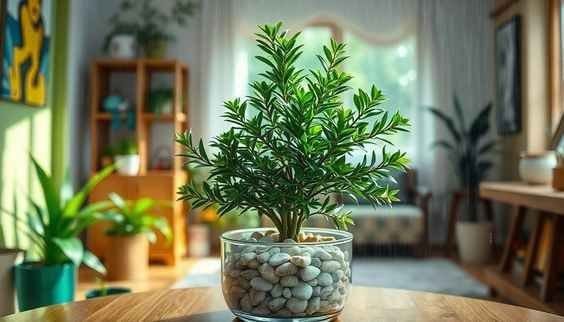
8. Chinese Evergreen: A Colorful and Resilient Choice
The Chinese evergreen, scientifically known as Aglaonema, stands out as one of the best indoor plants for beginners, particularly for urban families seeking to enhance their living spaces. This plant is appreciated not only for its striking colors and unique patterns but also for its remarkable adaptability, making it suitable for a variety of home environments. The Chinese evergreen is available in numerous varieties, each boasting different shades of green, silver, and even red, allowing it to serve as a decorative element that can match any décor.
One of the significant advantages of the Chinese evergreen is its ability to thrive in low-light conditions. With many families residing in apartments or homes with limited natural light, this plant becomes an ideal selection. Furthermore, it requires minimal maintenance, aligning perfectly with the needs of busy households. Its ability to flourish in low-light environments qualifies it as one of the best indoor plants for low light, ensuring that even those without a green thumb can enjoy its beauty.
Chinese evergreens are also renowned for their air-purifying properties, which makes them among the top choices for families aiming to improve indoor air quality. Furthermore, they are classified as hard-to-kill houseplants, enhancing their appeal to novice plant caregivers. To care for a Chinese evergreen, it is advisable to water it only when the top inch of soil becomes dry, allowing for adequate drainage to prevent root rot. Additionally, these indoor plants for small spaces can be positioned on shelves or tabletops without the worry of them requiring intense sunlight.
Lastly, selecting pet-friendly indoor plants is an essential factor for families with animals. The Chinese evergreen, while mildly toxic if ingested, poses minimal risk and is generally safe when placed out of reach, making it a pragmatic choice for green parenting.

9. Calathea: Earthy Elegance
The Calathea plant, renowned for its striking foliage, is an excellent addition to any indoor space, especially for urban families seeking to embrace green parenting. Known for its vibrant patterns and unique leaf shapes, Calathea serves not only as an aesthetic centerpiece but also as one of the best indoor plants for beginners. Its lush, colorful leaves can brighten up any area, bringing a sense of serenity and connection to nature.
One of the primary advantages of the Calathea is its low-maintenance requirements, making it suitable for busy families. It thrives in low light conditions, which makes it an ideal choice for indoor plants for small spaces. This characteristic allows Calatheas to adapt seamlessly to various home environments, from cozy apartments to larger houses. Furthermore, Calatheas require moderate humidity and should be watered regularly but should not be overwatered as they can succumb to root rot. Regular misting or a humidity tray can also promote healthy growth.
In terms of safety, Calathea is a non-toxic houseplant, making it a pet-friendly option for homes with children and animals. Unlike many other decorative plants that may pose risks, Calathea reassures caregivers that their indoor greenery is safe. This attribute aligns perfectly with the growing trend of incorporating air-purifying indoor plants into homes, as Calathea contributes to improving air quality while ensuring the safety of all family members. Its capacity to thrive without direct sunlight further cements its status as one of the hard-to-kill houseplants that are also aesthetically pleasing.
Thus, for urban families keen on fostering a green atmosphere without excessive care requirements, the Calathea stands out as an ideal choice among low-maintenance houseplants. Embracing this plant not only elevates the home’s interior but also instills an appreciation for nature in family life.

10. Aloe Vera
Aloe Vera is a remarkable indoor plant that combines aesthetic appeal with a range of practical benefits, making it a popular choice among plant enthusiasts. Known for its long, thick, fleshy leaves that store water, Aloe Vera is a type of succulent that thrives in bright, indirect light. Its striking green color and upright growth make it an attractive addition to any room, whether on a windowsill, bookshelf, or countertop. This hardy plant is also incredibly low-maintenance, requiring very little water and attention, which makes it ideal for beginners or busy individuals who want the benefits of indoor gardening without the hassle.
One of the primary reasons Aloe Vera is so highly valued is its medicinal properties. The gel found inside its thick leaves is known for its soothing and healing qualities, especially for treating skin burns, cuts, and irritation. Aloe Vera gel has been used for centuries in traditional medicine, and its cooling effects make it a go-to remedy for sunburns or minor skin injuries. Beyond topical applications, Aloe Vera has also been incorporated into various wellness products like lotions, shampoos, and even health supplements due to its purported benefits in promoting digestion, boosting hydration, and improving skin health.
In addition to its healing properties, Aloe Vera is also an excellent air-purifying plant. Like many other houseplants, Aloe Vera helps to filter and purify indoor air by removing harmful toxins such as formaldehyde and benzene. This can significantly improve the air quality in your home, making it a healthier environment for you and your family. The plant’s natural ability to absorb carbon dioxide and release oxygen, especially at night, adds to its overall contribution to a cleaner and more breathable indoor space.
Aloe Vera’s low-maintenance nature also makes it highly sustainable, which is an important factor for eco-conscious individuals. As a drought-tolerant plant, Aloe Vera requires infrequent watering, typically only when the soil is completely dry. This means it conserves water and can thrive in homes with minimal resources. It’s an excellent choice for urban homesteading and green parenting, where creating a sustainable, eco-friendly home is a priority. Whether you’re adding Aloe Vera for its beauty, health benefits, or air-purifying properties, it’s an excellent investment for your indoor garden, offering both functional and aesthetic value.
Conclusion: Embracing Green Parenting with Indoor Plants
As urban living increasingly becomes the norm, families seek ways to integrate nature into their homes, enhancing their children’s environments and promoting healthier lifestyles. The introduction of the best indoor plants for beginners can significantly impact urban families by improving air quality and creating a more serene home atmosphere. Incorporating indoor plants helps to foster a nurturing environment for children, providing them with a connection to nature that is crucial amidst city life.
The selection of low-maintenance houseplants can serve as a foundational aspect of green parenting. Options such as hard-to-kill houseplants make it easy for busy families to adopt this lifestyle without the fear of neglect. These resilient plants often require minimal care, while still offering aesthetic appeal and essential air-purifying benefits. Gardens within homes serve not only as decorations but also as educational tools, allowing children to learn about responsibility and nature.
Moreover, embracing indoor plants for clean air can positively influence both physical health and mental well-being. Pet-friendly indoor plants ensure that your furry friends are also considered, allowing families to nurture all members with ease. When choosing indoor plants for small spaces, fast-growing indoor plants can provide immediate gratification, bringing immediate greenery and vibrancy to living areas. Those looking for indoor plants that don’t need sunlight can explore numerous options, ensuring that urban dwellers can thrive in less-than-ideal conditions.
In summary, the integration of indoor plants extends beyond mere decoration—it embodies a lifestyle choice that symbolizes an investment in health, education, and relationships. By incorporating these recommended species into their homes, families not only embrace green parenting but also contribute positively to their overall living experience. The journey toward a greener home starts with the simple act of bringing nature indoors, making it accessible for everyone looking to enrich their lives and their children’s future.










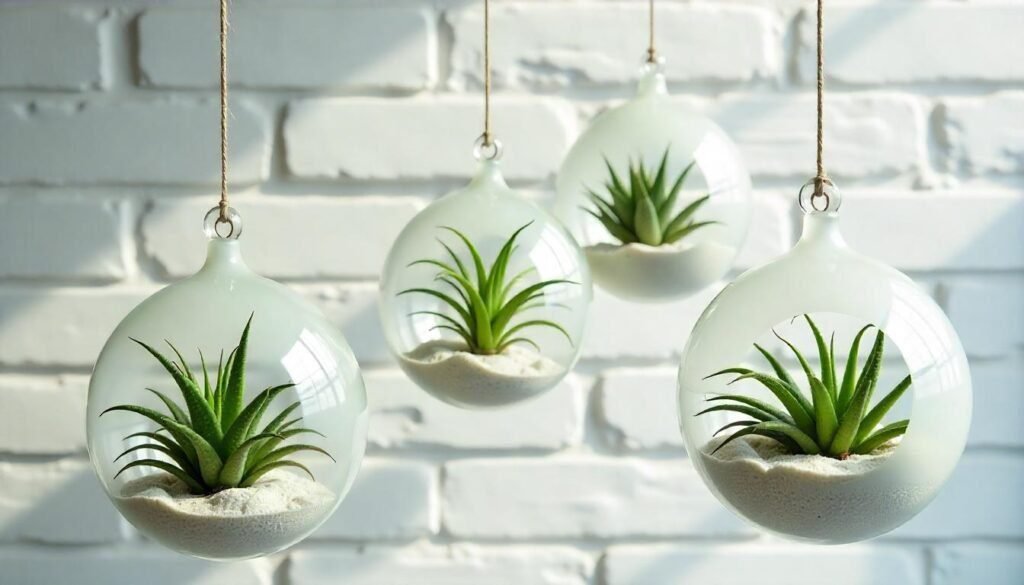

Pingback: How to Create a Sustainable Living Room on a Budget with DIY Eco-Friendly Fashion
Pingback: 10 Stunning Air Plants You Didn't Know Could Elevate Your Home Decor Game! - Daily Green Life Ideas
Pingback: Air Plants: The Ultimate Guide to Transforming Your Space into a Lush Oasis!
I?¦ll right away seize your rss feed as I can not find your e-mail subscription hyperlink or newsletter service. Do you have any? Please let me recognise so that I may subscribe. Thanks.
Your comment is awaiting moderation.